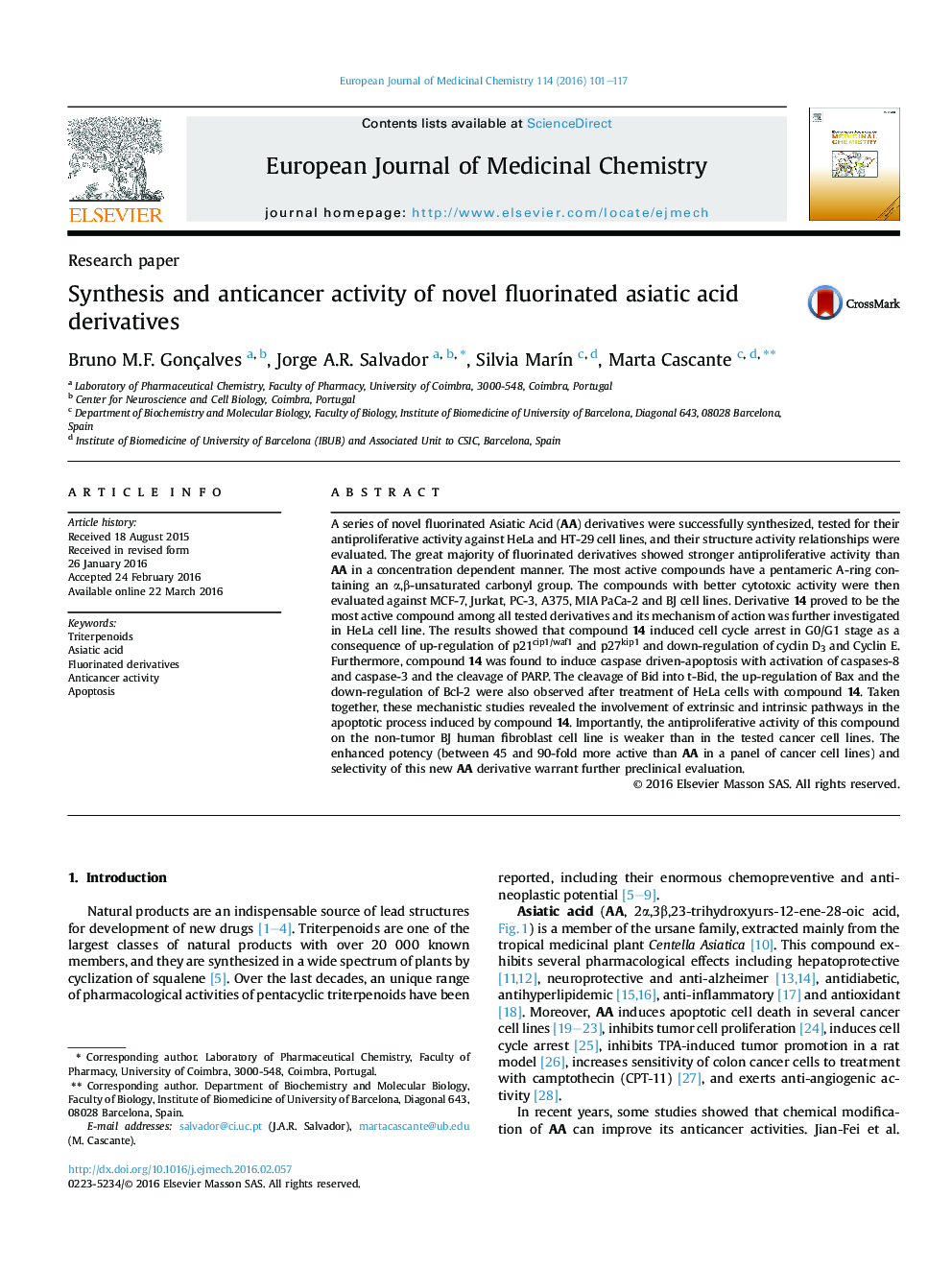| Article ID | Journal | Published Year | Pages | File Type |
|---|---|---|---|---|
| 1398636 | European Journal of Medicinal Chemistry | 2016 | 17 Pages |
•A series of new fluorinated asiatic acid derivatives were synthesized.•The new derivatives were evaluated against several human cancer cell lines.•The majority of new derivatives showed significant antiproliferative activity.•Compound 14 was the most active compound among all tested derivatives.•Studies revealed that compound 14 induces cell cycle arrest and apoptosis.
A series of novel fluorinated Asiatic Acid (AA) derivatives were successfully synthesized, tested for their antiproliferative activity against HeLa and HT-29 cell lines, and their structure activity relationships were evaluated. The great majority of fluorinated derivatives showed stronger antiproliferative activity than AA in a concentration dependent manner. The most active compounds have a pentameric A-ring containing an α,β-unsaturated carbonyl group. The compounds with better cytotoxic activity were then evaluated against MCF-7, Jurkat, PC-3, A375, MIA PaCa-2 and BJ cell lines. Derivative 14 proved to be the most active compound among all tested derivatives and its mechanism of action was further investigated in HeLa cell line. The results showed that compound 14 induced cell cycle arrest in G0/G1 stage as a consequence of up-regulation of p21cip1/waf1 and p27kip1 and down-regulation of cyclin D3 and Cyclin E. Furthermore, compound 14 was found to induce caspase driven-apoptosis with activation of caspases-8 and caspase-3 and the cleavage of PARP. The cleavage of Bid into t-Bid, the up-regulation of Bax and the down-regulation of Bcl-2 were also observed after treatment of HeLa cells with compound 14. Taken together, these mechanistic studies revealed the involvement of extrinsic and intrinsic pathways in the apoptotic process induced by compound 14. Importantly, the antiproliferative activity of this compound on the non-tumor BJ human fibroblast cell line is weaker than in the tested cancer cell lines. The enhanced potency (between 45 and 90-fold more active than AA in a panel of cancer cell lines) and selectivity of this new AA derivative warrant further preclinical evaluation.
Graphical abstractFigure optionsDownload full-size imageDownload as PowerPoint slide
